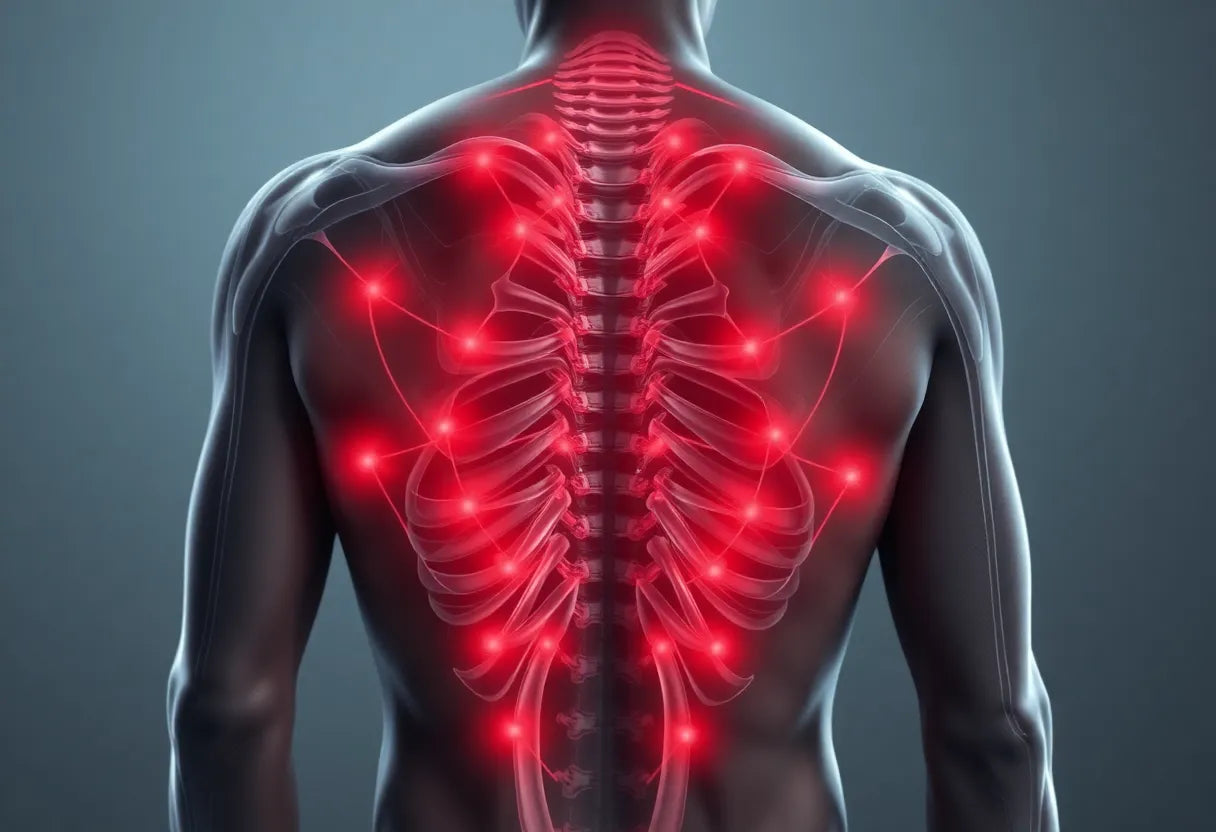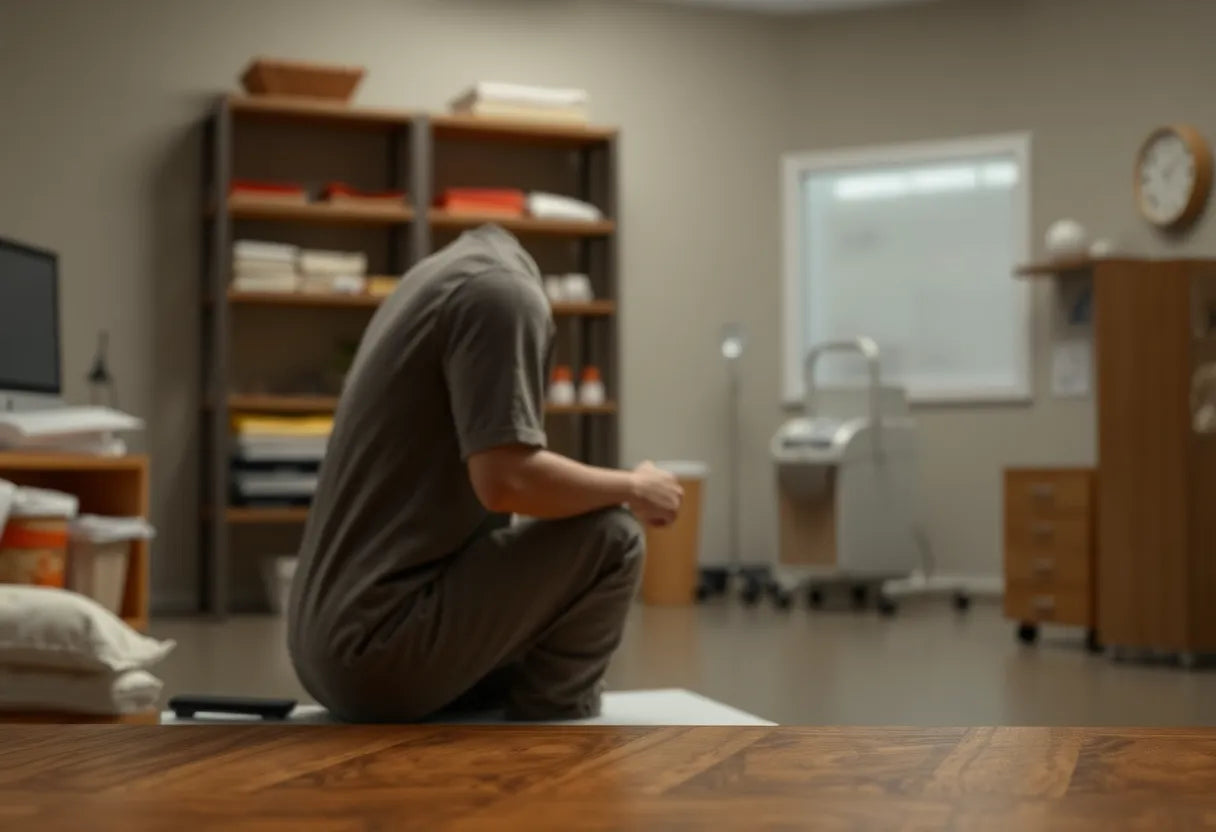Understanding the complexities of a crooked back is essential for anyone seeking to improve their spinal health. A crooked back, often characterized by conditions such as lateral shifts, kyphosis, or general spinal misalignments, can lead to discomfort and impact daily life. These conditions may manifest as a visible curve or tilt in the spine, affecting posture and sometimes causing pain.
Several factors can contribute to the development of a crooked back. Poor posture, whether from prolonged sitting or incorrect lifting techniques, is a common culprit. Muscle imbalances, where certain muscles are stronger or tighter than their counterparts, can pull the spine out of alignment. Additionally, injuries or degenerative conditions may exacerbate or cause spinal misalignments.
Addressing these issues is crucial to prevent long-term discomfort and potential complications. Ignoring a crooked back can lead to chronic pain, reduced mobility, and even more severe spinal conditions over time. Therefore, early intervention and management are key.
the role of exercises in correcting spinal misalignments
Corrective exercises offer a non-invasive approach to managing and improving spinal alignment. These exercises are designed to target specific muscles and movements to help realign the spine, strengthen supporting muscles, and enhance overall posture. By engaging in a regular routine of targeted exercises, individuals can work towards correcting their spinal misalignments and alleviating associated discomfort.
It's important to note that while exercises can be highly beneficial, professional guidance may be necessary for severe cases. A healthcare professional or physical therapist can provide personalized advice and ensure exercises are performed correctly to avoid further injury.
In the following sections, we will delve into specific exercises that can help address a crooked back. These exercises are chosen for their effectiveness in promoting spinal alignment and strengthening the core and back muscles. By incorporating these exercises into your routine, you can take proactive steps toward improving your spinal health and overall well-being.

Lumbar support belt
Provides adjustable compression, stability, and relief for lower back pain and spinal misalignment.
effective exercises for a crooked back
Engaging in targeted exercises is a proactive approach to realigning a crooked back and alleviating discomfort. These exercises are designed to address specific spinal misalignments by focusing on muscle engagement, flexibility, and strength. Below, we explore a series of exercises that can be incorporated into your routine to help manage and improve spinal alignment.
passive side-lying support
Purpose: This exercise serves as a gentle introduction to spinal realignment, particularly beneficial for those experiencing a lateral shift.
How to Perform: Lie on the side where the lateral shift is present, placing a supportive cushion under your ribcage. This position allows gravity to assist in the gentle realignment of your spine. Relax in this position for several minutes, focusing on deep, even breaths to enhance relaxation and effectiveness.
side-bridge/core activation
Purpose: This exercise targets core stabilization and engages the muscles supporting the spine, crucial for maintaining spinal alignment.
How to Perform: Begin by lying on your side, supporting your body on your forearm and knee. Lift your hips off the ground, ensuring your body forms a straight line from head to knees. Hold this position for 10-15 seconds, then switch sides to ensure balanced muscle engagement.
quadruped derotation
Purpose: This exercise is designed to correct spinal rotation and improve overall alignment.
How to Perform: Start on all fours, ensuring your hands are under your shoulders and knees under your hips. Gently shift your weight from side to side, maintaining a neutral spine throughout the movement. Perform this exercise for 1-2 minutes, concentrating on smooth, controlled motions to enhance its effectiveness.
wall lateral shift
Purpose: This exercise focuses on stretching and realigning the spine through lateral bending.
How to Perform: Stand with one side of your body against a wall, feet shoulder-width apart. Press your hip towards the wall, feeling a stretch along the side of your torso. Hold this position for 20-30 seconds, then repeat on the opposite side to promote balance and alignment.
superman/life extension
Purpose: This exercise is aimed at strengthening the posterior chain and correcting spinal alignment.
How to Perform: Lie face down on the floor with your arms and legs extended. Simultaneously lift both your arms and legs off the ground, keeping your head in a neutral position. Hold this position for 5-10 seconds, then lower your limbs and repeat the exercise. This movement helps reinforce the muscles along the spine, contributing to better posture and alignment.
Incorporating these exercises into your daily routine can significantly impact your spinal health. They not only promote alignment but also strengthen the core and back muscles, which are essential for maintaining proper posture. However, it's important to listen to your body and consult a healthcare professional if you experience any pain or if your condition is severe. By committing to these exercises, you can take active steps toward improving your spinal health and enhancing your overall well-being.

Men's Posture Shirt™ - White
Activates muscles and may relieve pain; patented tech for posture correction and spinal support.
continuation of effective crooked back exercises
Continuing from our previous discussion on exercises designed to correct spinal misalignments, we introduce a few more techniques that can be beneficial in addressing a crooked back. These exercises focus on counteracting postural deviations, improving flexibility, and promoting overall spinal health.
mirror image
Purpose: This exercise helps counteract abnormal postures by assuming the opposite position, which can aid in realigning the spine.
How to Perform: First, identify the direction of your spinal curve. Gently move into the opposite posture, holding this corrective position briefly. Repeat this exercise several times throughout the day to promote balance and alignment.
foam rolling
Purpose: Foam rolling is effective for mobilizing and loosening the thoracic spine, which can help alleviate tension and improve posture.
How to Perform: Position a foam roller under your mid-back. Cross your arms over your chest and gently roll up and down along your spine, focusing on areas that feel tight. This exercise can be performed for a few minutes each day to enhance flexibility and reduce stiffness.
cobra pose
Purpose: The cobra pose is beneficial for lumbar extension and spinal decompression, helping to relieve pressure on the spine.
How to Perform: Lie on your stomach with your hands placed under your shoulders. Gently lift your chest off the ground, keeping your elbows slightly bent and shoulders relaxed. Hold this position for 15-30 seconds, focusing on deep breathing to enhance the stretch.
downward-facing dog
Purpose: This full-body stretch improves posture and flexibility, promoting better alignment.
How to Perform: Begin on all fours, then lift your hips towards the ceiling, forming an inverted V-shape with your body. Keep your feet hip-width apart and hands shoulder-width apart. Hold this position for 30-60 seconds, allowing your body to relax into the stretch.
planks/pelvic tilts
Purpose: These exercises focus on core stabilization and correction of lumbar lordosis, which can contribute to improved spinal alignment.
How to Perform: For planks, hold a push-up position, ensuring a straight line from head to heels. For pelvic tilts, lie on your back with knees bent and gently tilt your pelvis to flatten your lower back against the floor. Both exercises should be performed with controlled movements to maximize their benefits.
By incorporating these exercises into your routine, you can proactively work towards correcting a crooked back and enhancing your overall posture. Remember to perform each exercise mindfully and consult a healthcare professional if you experience any discomfort or if your condition is severe.
frequently asked questions
what is a lateral shift in the spine?
A lateral shift refers to a sideward deviation of the spine, often resulting from muscle imbalances or injury. It may cause visible asymmetry and discomfort.
when should I see a doctor for a crooked back?
If you experience severe pain, persistent discomfort, or if the crookedness affects your daily activities, it is advisable to consult a healthcare professional for a proper diagnosis and treatment plan.
how long should each exercise be held?
The duration of each exercise varies, but generally, stretches should be held for 20-30 seconds, while strengthening exercises should be performed for 5-10 repetitions.
can ergonomic aids help with a crooked back?
Yes, ergonomic aids such as lumbar support cushions and adjustable desks can support proper posture and complement exercise routines, aiding in the management of a crooked back.
Källor
- Institute of Medicine (US) Committee on Advancing Pain Research, Care, and Education. (2011). Relieving Pain in America. National Academies Press (US).
- UCSF Sports Medicine. (n.d.). McKenzie Back Protocol.
- Hospital for Special Surgery. (n.d.). Exercises for Lower Back Pain.
- Mayo Clinic Staff. (n.d.). Back Pain.
- Medical News Today. (2020). What to Know About Lordosis.
- American Academy of Orthopaedic Surgeons. (2017). Rehabilitation Protocol for Spine.
- Mayo Clinic Health System. (2021). Low Back Pain Exercises.
- Alberta Health Services. (n.d.). Back Pain: Exercises.
- Cleveland Clinic. (n.d.). Lordosis.


















